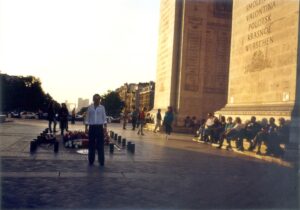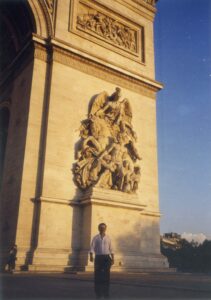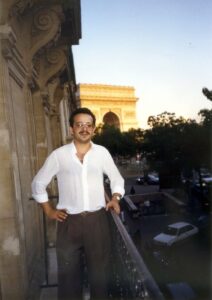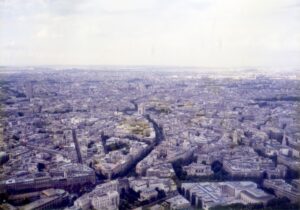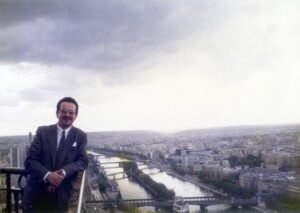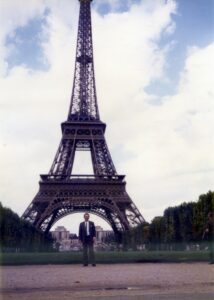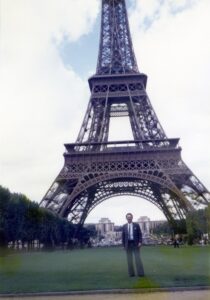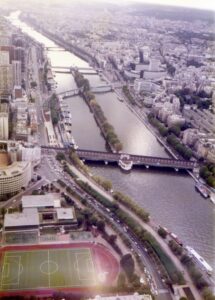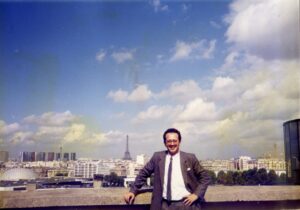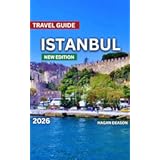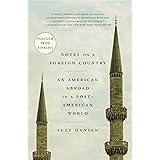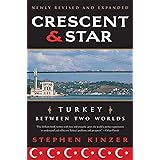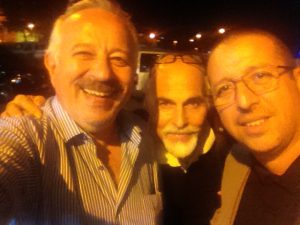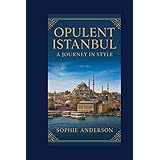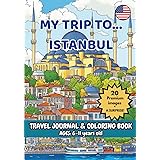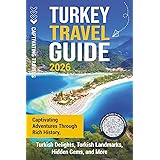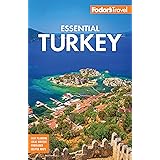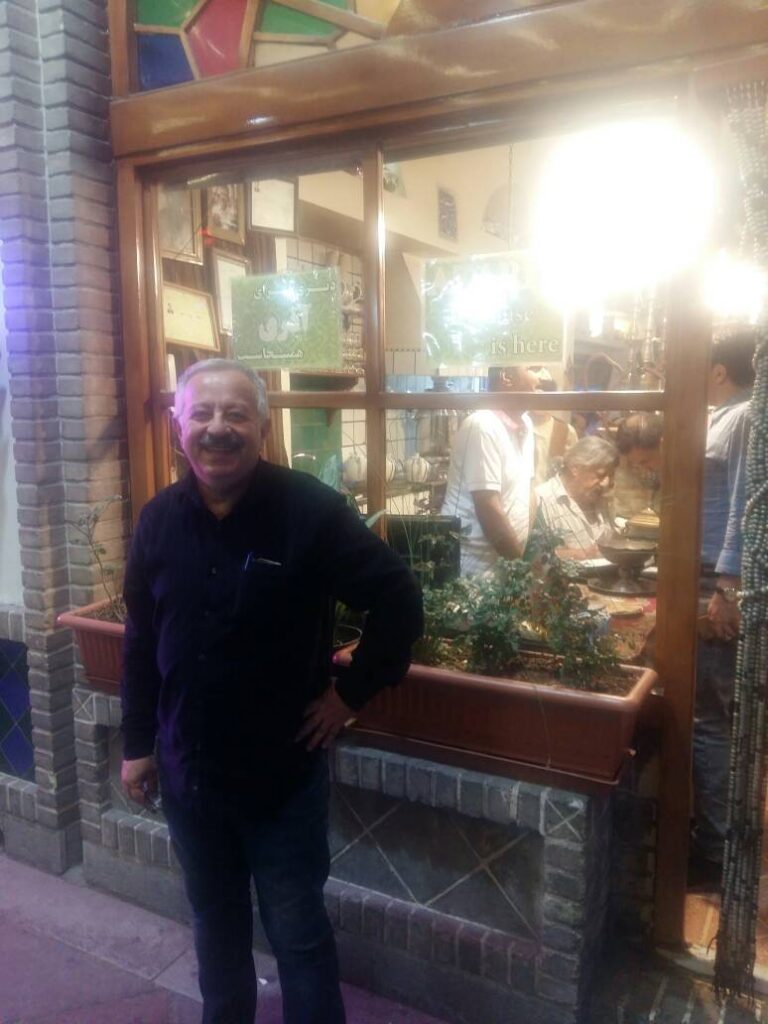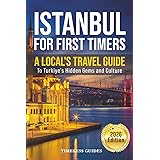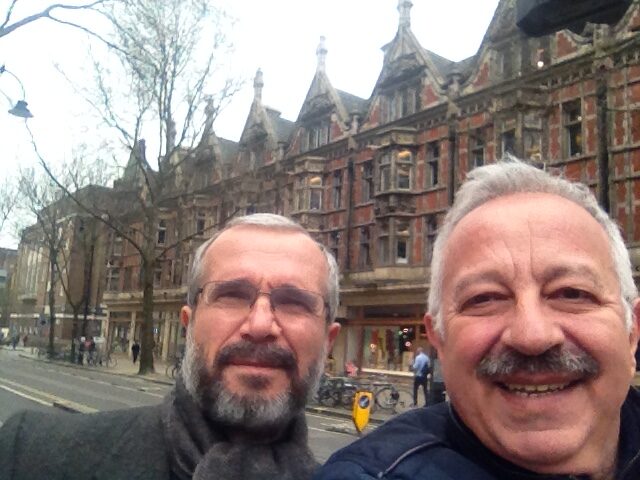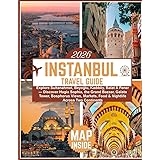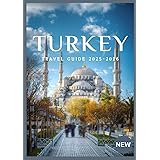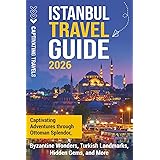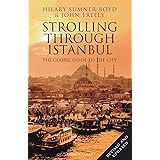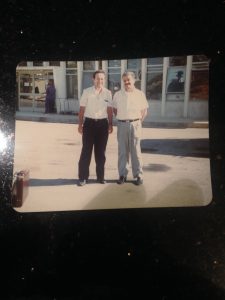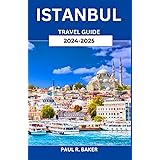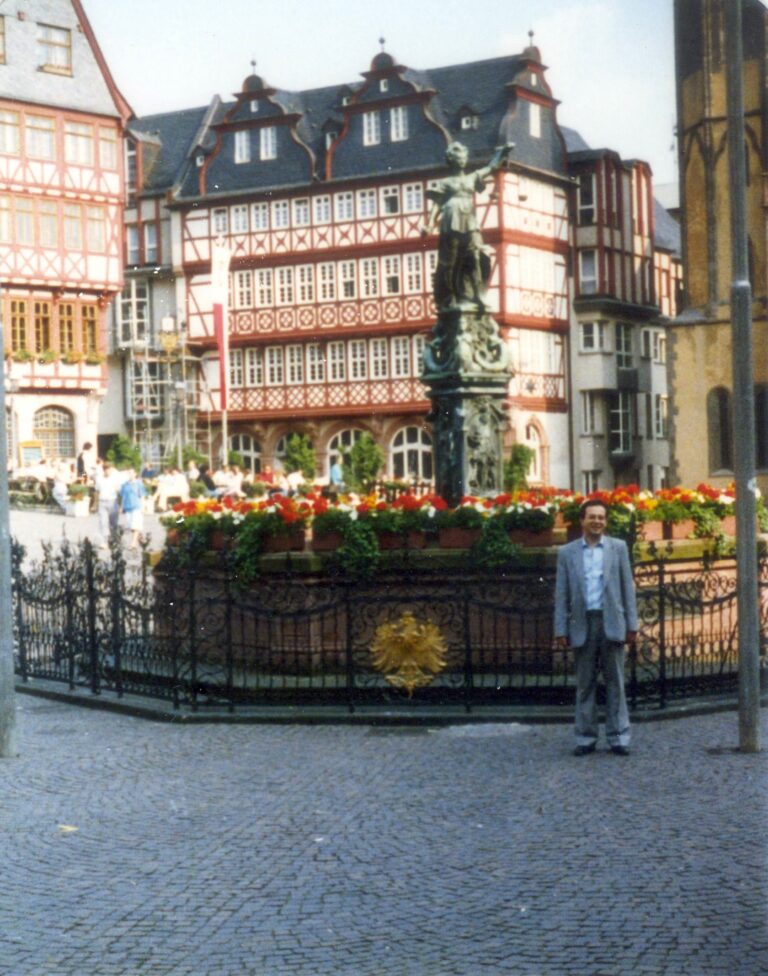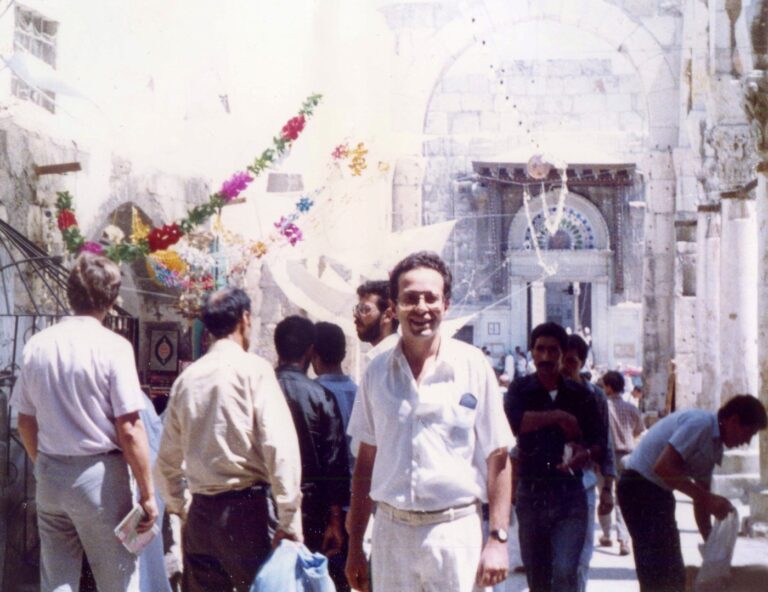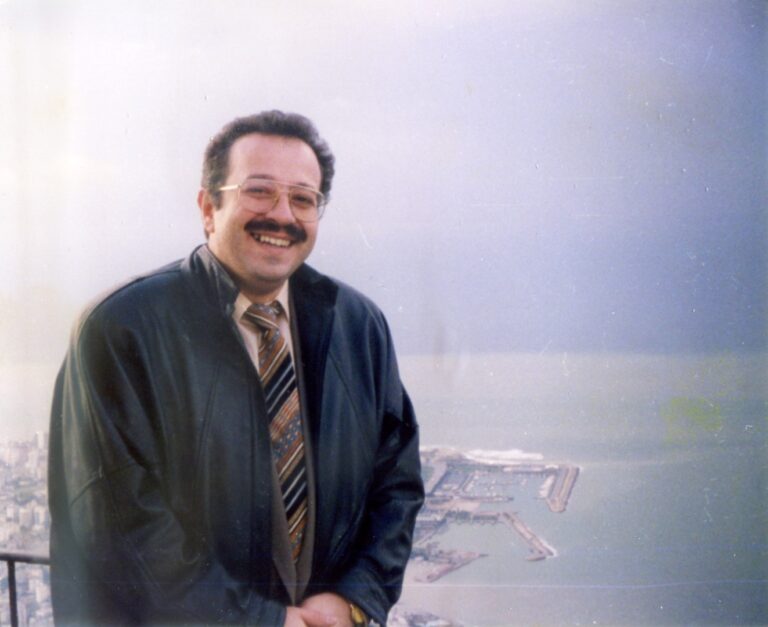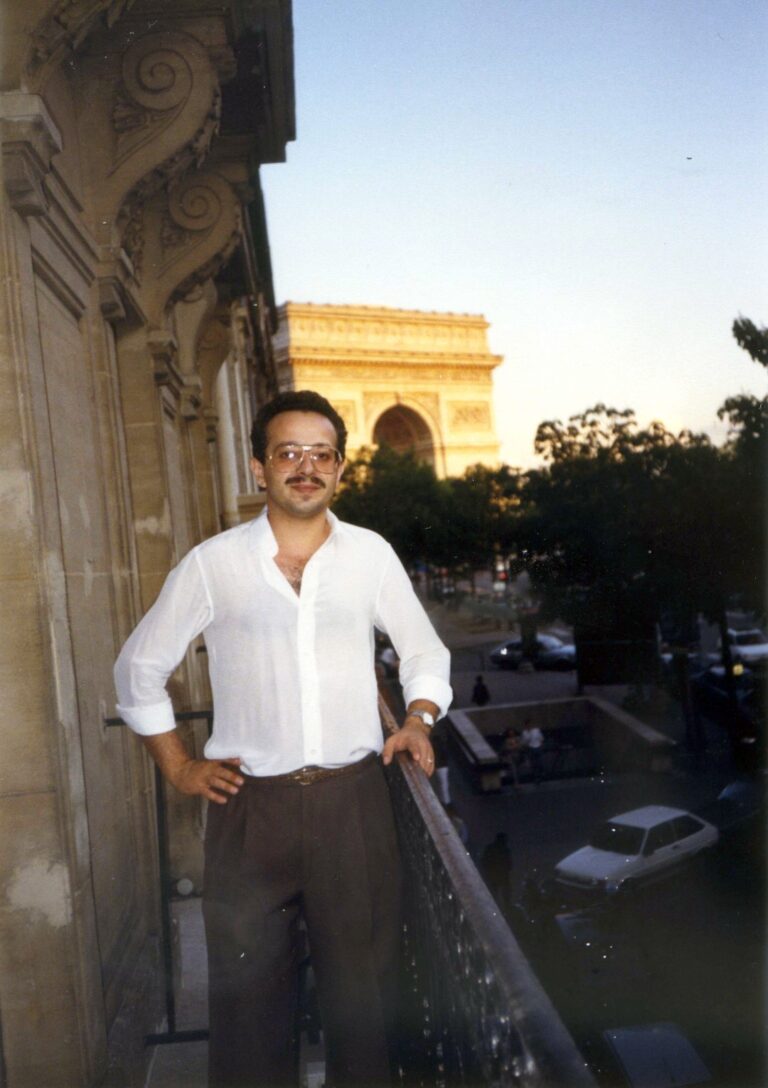Algeria, Africa

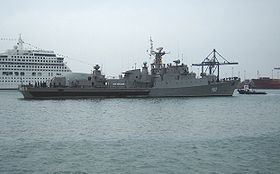
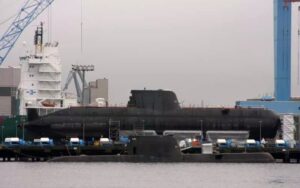
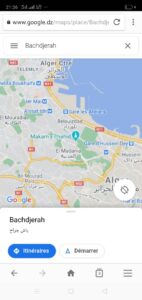
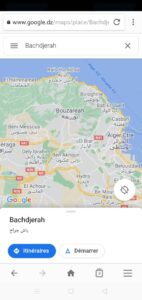
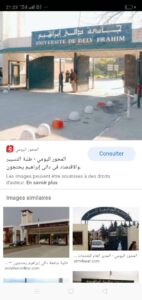
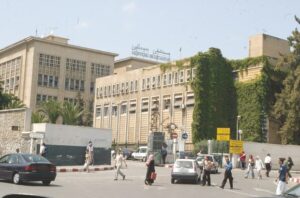


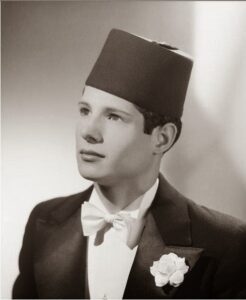
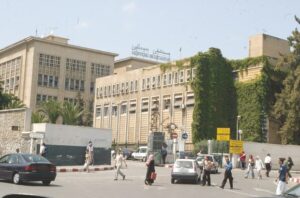
Hossineday
Daly ibrahim
Baba hssen
Baba ali
Bach djerrah
Bir Mourad rais
Ousta Ouali in Franch staouali
The big hospital of cezair is
Mustapha bacha hospital
Whose submarine?
Türk şirketi HAVELSAN, Türk STM havzalarında inşa edilmekte olan Murad Reis sınıfından 3 denizaltısının kontrol ve bilgi dağıtım sistemlerinin teslimatını tamamladı
In cezair city we have beladeya Murad reis
Bir Murad reis
Mourad Rais Frégate of Algerian navy army
Same name
“Muhammed’in kanunu, akıl ve bilgelikle uyumlu olduğu için dünyada hakim olacaktır.”
Ünlü Rus yazar “Tolstoy”
tcharak cezayir kekleri özel yardım el fitr. bu kekler dışında Cezayirliler tch telaffuz etmezler ama ch bu nedenle bir Osmanlı adıdır
tcharak algerian cakes special aid el fitr. apart from this cakes the Algerians do not pronounce tch but ch it is therefore an Ottoman name not exactly a classic croissant with pastries. but a traditional Algerian cakes specific to the croissant of l thus aid the end of a lunar month, Ramadan and the beginning of the month of choual
But it’s a Turkish prononciation
Tch
Tcharak
Yes in Turkish çörek
In Algeria tcharak
We eat it only in aid fitr
Bourak dolma Zalabia baklaoua
It s cezair
Baklaoua of cezair
cezerye
Tow city in West of Algeria have the name of hospital
Damardji
Telmcen big city hospital tidjani damardji
Tiaret big city hospital Youcef damerdji
Yes
Tidjani damardji and Youcef damardji are chahid Big chahid
Damardji isca Big family in Algeria with a lot of chahid
During war
1954 1962
1500000 chahid
historically the notables of Algiers have understood that their alliance with the Barbarous brothers will be beneficial for their independence and the safeguard of their identities unlike the Moroccans who have chosen the path of the protectorat of spania
after their victory over the spanish the algerians went to give allegiance to the caliph Salim father of soleimane they asked that it be kheirredine bey of Algiers. afterwards the sultan accepted and sent with them 500 janissaries
since kheirredine, the first bey of Algeria to this day, the Algerians have never had a king of the bey of the bacha of the agha of the dey and finally of the presidents
the adventure between the barbarous brothers and the notables of Algiers made it possible to liberate the entire algerian coast from spanish colonization but the treachery of the moroccans that to this day the cities of sebta and millia are spanish to thisday for over 500 years.
yesterday I left to visit the village of my ancestors. I got the following information.our family whose origins go back to El Hassen son of Ali Ibn taleb radia ALLAH aleihoum. have always been on the side of kheireddine barbarous. have suffered a massacre in 1880 by France
France executed all adult men over 18 and expelled children including my great grandfather and dispossessed the whole family
It was a dark for us
now I understand why I have so much hatred towards France and the whole occident.
all the documents concerning the properties of my family are in the archives in istanbul. i will find them in chaa ALLAH .
Mr Hattali, Algeria
……………………………..
How are Algerian Turks regarded in both Turkey and Algeria?
Unfortunately, most Turks will be surprised to hear there is an estimated amount of over ten million North Africans of at least partial Turkish descent as they have never heard of the Turkish community in the Maghreb.
When I came across the Wikipedia page about Turks from Algeria, I felt an immense sense of pride and belonging to them as someone who is also a Turkish person from regions outside the modern borders of Turkey, and that pride only enlarged when I read how much Turks have greatly contributed to Algeria. Matter of fact, the leader of its independence movement, aiming towards secession from France, was a Turco-Algerian.
The Turks from Algeria, and the entire Maghreb for that matter, descend from Kuloğlus who are the off-springs of local Berber women and Turkish settlers to Algeria who became part of the Ottoman elite as a result of their willingness to migrate to newly conquered regions.
What makes me happy to see are their surnames, which to this day still reflect their Turkish ancestors’ hometowns. Algerians with surnames such as Keicerli (from Kayseri), Ould Zmirli (from Izmir), Tchanderli (from Çandarlı) and many other ones, many of which listed in the Wikipedia page about Turks in Algeria, are of Turkish origin and show their bearers have at least one Turkish ancestor.
What I love most, is that these Turks can be themselves in Algeria, where they are respected and as far as I know not discriminated against. I have never heard any Turco-Algerian complain about Algeria, nor have I ever heard an Algerian talk bad about their Turkish counterparts. They are truly part of their homeland, Algeria, but if a Turco-Algerian with the surname Ould Zmirli decided to visit Izmir, my hometown, provided that I am there at the moment I would be more than happy to be his host and show him his second homeland.
Salim Halali (1920–2005), a Turco-Algerian pop singer who is very popular among North Africans and Jews to this day.
for your information, the boss of one of the Algerian intelligence services, namely the security of the army, is called general ould zmirli
He was the student of shakib arselan
the Algerian independence leader is called messali el haj an Algerian of Turkish origin was the father of the national movement. Tlemcen airport bears his name
He was the spiritual father of the liberation front of Algeria FLN
the former boss of the police is called kara an algerian of origin
my wife’s cousins are khardja karadj
Big family installed in telmcen
ALN lieutenant Ali Khodja leader of the elite commando group Ali Khodja
Chahid Algerian martyr of Turkish origin a big man
I will arrange a file with your messages. Thank you..
Thus, today, many estimates suggest that Algerians of Turkish origin still represent up to 25% (including of partial Turkish origin) of the country’s population
Very big
Libya and Tunisia as well
I think same percentage
No only lybia an algeria
Tunisia not?
But Algeria more because in Algeria the big city in the north
In the first step andaloussia people came to the city
Turkish people were installed in the same city
City’s are
Cezair blida kolea meliana Constantine collo Annaba Tlemcen Médéa mazzouna dellys Béjaïa jijel.
Oran
Than in Algeria we have a. Lot of city in North
Big city and very old town
In cezair city we have small beladeya
The half have Turkish name
Baris Ates. February 13, 2018.Lives in The Netherlands
……………………………………………………………..
This is a Turkish doctorat thèse in 1953
This an Arabic translation during year 1970
https://m.youtube.com/watch?v=_L44uT5dw60&feature=youtu.be
https://m.youtube.com/watch?v=1VaGLXTGna8
https://m.youtube.com/watch?v=KdBtpDzuWT4
https://m.youtube.com/watch?v=ukYewkM2d5E
https://m.youtube.com/watch?v=PD5zTC7SjJ4
https://m.youtube.com/watch?v=E4FJ-v9F2Q8
https://m.youtube.com/watch?v=HniA0NiqZWc
Türklerin düğünlerinde Cezayir hakkında söyledikleri miras şarkısı, Cezayir’in hilal gibi güzel olduğunu söylüyorlar, sokakları mermerden, gemileri düşmanları yok etmeye hazır.
https://m.youtube.com/watch?v=YRgQnzmXfr4
In Turkish and Arabic cezayr
Lonely Planet Istanbul (Travel Guide)
$5.98 (as of 04/01/2026 21:28 GMT +03:00 - More infoProduct prices and availability are accurate as of the date/time indicated and are subject to change. Any price and availability information displayed on [relevant Amazon Site(s), as applicable] at the time of purchase will apply to the purchase of this product.)Rick Stein: From Venice to Istanbul: Discovering the Flavours of the Eastern Mediterranean
$14.99 (as of 04/01/2026 21:28 GMT +03:00 - More infoProduct prices and availability are accurate as of the date/time indicated and are subject to change. Any price and availability information displayed on [relevant Amazon Site(s), as applicable] at the time of purchase will apply to the purchase of this product.)Opulent Istanbul: A Journey In Style
$22.99 (as of 04/01/2026 21:28 GMT +03:00 - More infoProduct prices and availability are accurate as of the date/time indicated and are subject to change. Any price and availability information displayed on [relevant Amazon Site(s), as applicable] at the time of purchase will apply to the purchase of this product.)To the City: Life and Death Along the Ancient Walls of Istanbul
$6.05 (as of 04/01/2026 21:28 GMT +03:00 - More infoProduct prices and availability are accurate as of the date/time indicated and are subject to change. Any price and availability information displayed on [relevant Amazon Site(s), as applicable] at the time of purchase will apply to the purchase of this product.)Rick Steves Istanbul: With Ephesus & Cappadocia
$19.22 (as of 04/01/2026 21:28 GMT +03:00 - More infoProduct prices and availability are accurate as of the date/time indicated and are subject to change. Any price and availability information displayed on [relevant Amazon Site(s), as applicable] at the time of purchase will apply to the purchase of this product.)Istanbul Travel Guide: 50+ Cool Things To See And Do To Have An Amazing Experience In Istanbul, Turkey. (Roy McKean Travel Tour Resources)
$16.99 (as of 04/01/2026 21:28 GMT +03:00 - More infoProduct prices and availability are accurate as of the date/time indicated and are subject to change. Any price and availability information displayed on [relevant Amazon Site(s), as applicable] at the time of purchase will apply to the purchase of this product.)Notes on a Foreign Country: An American Abroad in a Post-American World
$9.95 (as of 04/01/2026 21:28 GMT +03:00 - More infoProduct prices and availability are accurate as of the date/time indicated and are subject to change. Any price and availability information displayed on [relevant Amazon Site(s), as applicable] at the time of purchase will apply to the purchase of this product.)The Mini Rough Guide to Istanbul and the Aegean Coast: Travel Guide with eBook
$12.48 (as of 04/01/2026 21:28 GMT +03:00 - More infoProduct prices and availability are accurate as of the date/time indicated and are subject to change. Any price and availability information displayed on [relevant Amazon Site(s), as applicable] at the time of purchase will apply to the purchase of this product.)MY TRIP TO... ISTANBUL – Coloring Book with Famous Landmarks and Fun Facts (Ages 6–11)
$9.99 (as of 04/01/2026 21:28 GMT +03:00 - More infoProduct prices and availability are accurate as of the date/time indicated and are subject to change. Any price and availability information displayed on [relevant Amazon Site(s), as applicable] at the time of purchase will apply to the purchase of this product.)Wallpaper* City Guide Istanbul
(as of 04/01/2026 21:28 GMT +03:00 - More infoProduct prices and availability are accurate as of the date/time indicated and are subject to change. Any price and availability information displayed on [relevant Amazon Site(s), as applicable] at the time of purchase will apply to the purchase of this product.)Turkey Travel Guide: Captivating Adventures through Rich History, Turkish Delights, Turkish Landmarks, Hidden Gems, and More (Traveling the World)
$13.69 (as of 04/01/2026 21:34 GMT +03:00 - More infoProduct prices and availability are accurate as of the date/time indicated and are subject to change. Any price and availability information displayed on [relevant Amazon Site(s), as applicable] at the time of purchase will apply to the purchase of this product.)Lonely Planet Pocket Istanbul (Pocket Guide)
$12.13 (as of 04/01/2026 21:34 GMT +03:00 - More infoProduct prices and availability are accurate as of the date/time indicated and are subject to change. Any price and availability information displayed on [relevant Amazon Site(s), as applicable] at the time of purchase will apply to the purchase of this product.)Istanbul: Memories and the City
$1.31 (as of 04/01/2026 21:34 GMT +03:00 - More infoProduct prices and availability are accurate as of the date/time indicated and are subject to change. Any price and availability information displayed on [relevant Amazon Site(s), as applicable] at the time of purchase will apply to the purchase of this product.)Turkish Short Stories for Beginners: 20 Captivating Short Stories to Learn Turkish & Grow Your Vocabulary the Fun Way! (Easy Turkish Stories)
$13.75 (as of 04/01/2026 21:34 GMT +03:00 - More infoProduct prices and availability are accurate as of the date/time indicated and are subject to change. Any price and availability information displayed on [relevant Amazon Site(s), as applicable] at the time of purchase will apply to the purchase of this product.)A Guide to Biblical Sites in Greece and Turkey
$18.47 (as of 04/01/2026 21:34 GMT +03:00 - More infoProduct prices and availability are accurate as of the date/time indicated and are subject to change. Any price and availability information displayed on [relevant Amazon Site(s), as applicable] at the time of purchase will apply to the purchase of this product.)DK Top 10 Istanbul (Pocket Travel Guide)
$4.12 (as of 04/01/2026 21:34 GMT +03:00 - More infoProduct prices and availability are accurate as of the date/time indicated and are subject to change. Any price and availability information displayed on [relevant Amazon Site(s), as applicable] at the time of purchase will apply to the purchase of this product.)A Traveller's History of Turkey
$6.96 (as of 04/01/2026 21:34 GMT +03:00 - More infoProduct prices and availability are accurate as of the date/time indicated and are subject to change. Any price and availability information displayed on [relevant Amazon Site(s), as applicable] at the time of purchase will apply to the purchase of this product.)Fodor's Essential Turkey (Full-color Travel Guide)
$16.63 (as of 04/01/2026 21:34 GMT +03:00 - More infoProduct prices and availability are accurate as of the date/time indicated and are subject to change. Any price and availability information displayed on [relevant Amazon Site(s), as applicable] at the time of purchase will apply to the purchase of this product.)Rick Steves Istanbul: With Ephesus & Cappadocia
$11.49 (as of 04/01/2026 21:34 GMT +03:00 - More infoProduct prices and availability are accurate as of the date/time indicated and are subject to change. Any price and availability information displayed on [relevant Amazon Site(s), as applicable] at the time of purchase will apply to the purchase of this product.)The Turkish Cookbook
$42.79 (as of 04/01/2026 21:34 GMT +03:00 - More infoProduct prices and availability are accurate as of the date/time indicated and are subject to change. Any price and availability information displayed on [relevant Amazon Site(s), as applicable] at the time of purchase will apply to the purchase of this product.)Tehran, Iran. 2019
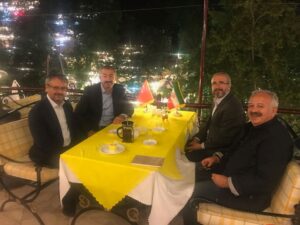
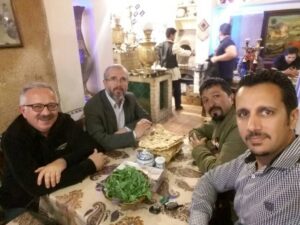
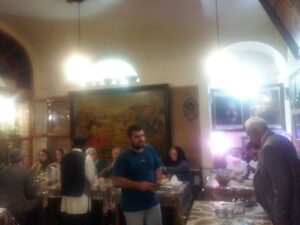
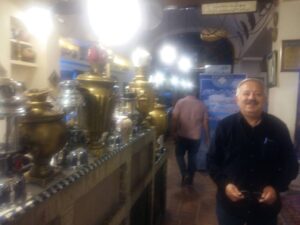
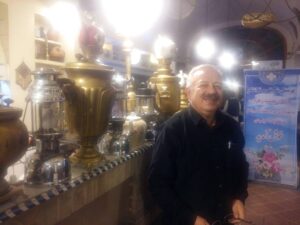
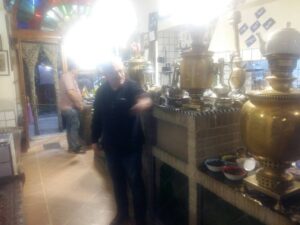
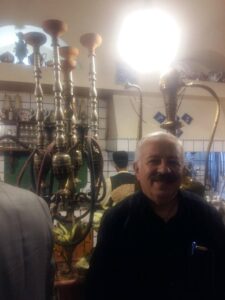
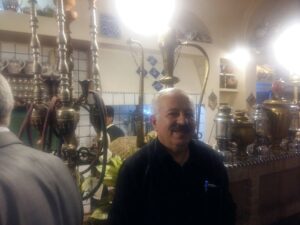
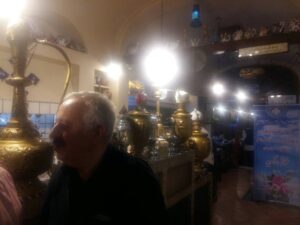
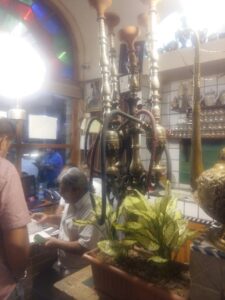
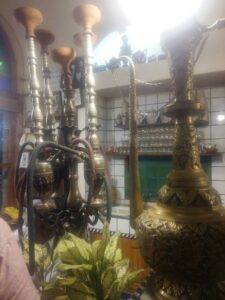
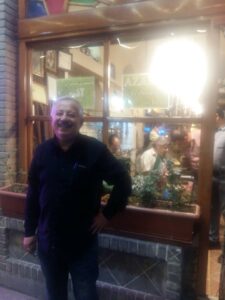
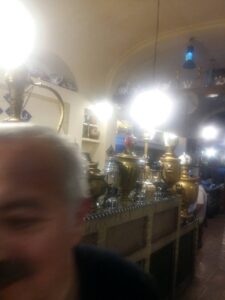
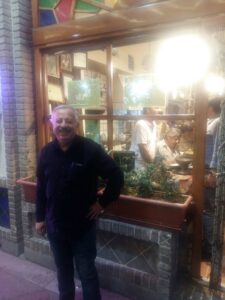
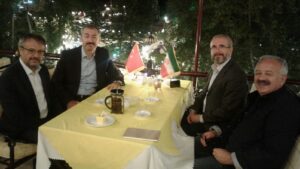
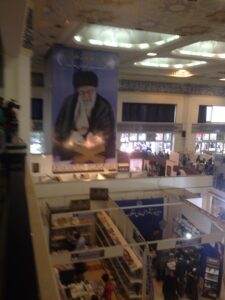
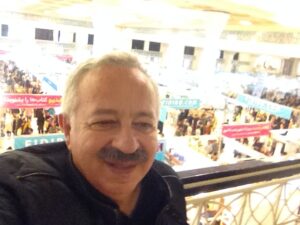
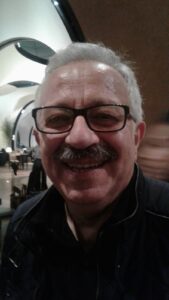
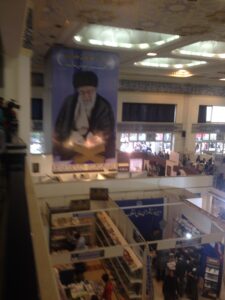
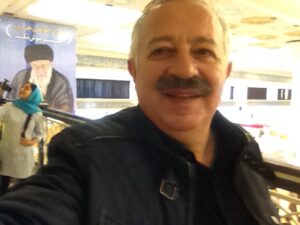
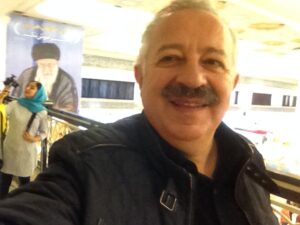
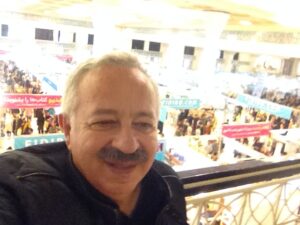
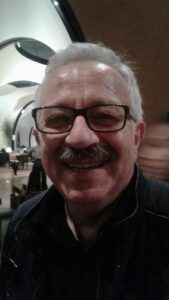
MY TRIP TO... ISTANBUL – Coloring Book with Famous Landmarks and Fun Facts (Ages 6–11)
$9.99 (as of 04/01/2026 21:28 GMT +03:00 - More infoProduct prices and availability are accurate as of the date/time indicated and are subject to change. Any price and availability information displayed on [relevant Amazon Site(s), as applicable] at the time of purchase will apply to the purchase of this product.)Rick Stein: From Venice to Istanbul: Discovering the Flavours of the Eastern Mediterranean
$14.99 (as of 04/01/2026 21:28 GMT +03:00 - More infoProduct prices and availability are accurate as of the date/time indicated and are subject to change. Any price and availability information displayed on [relevant Amazon Site(s), as applicable] at the time of purchase will apply to the purchase of this product.)ISTANBUL TRAVEL GUIDE 2026 (Full-Color): From Hagia Sophia to the Spice Bazaar, Bosphorus to Topkapi Palace, Experience the History, Food, Art, Shopping, Nightlife and Adventures of This Timeless City
$14.99 (as of 04/01/2026 21:28 GMT +03:00 - More infoProduct prices and availability are accurate as of the date/time indicated and are subject to change. Any price and availability information displayed on [relevant Amazon Site(s), as applicable] at the time of purchase will apply to the purchase of this product.)Rick Steves Istanbul: With Ephesus & Cappadocia
$19.99 (as of 04/01/2026 21:28 GMT +03:00 - More infoProduct prices and availability are accurate as of the date/time indicated and are subject to change. Any price and availability information displayed on [relevant Amazon Site(s), as applicable] at the time of purchase will apply to the purchase of this product.)Notes on a Foreign Country: An American Abroad in a Post-American World
$9.95 (as of 04/01/2026 21:28 GMT +03:00 - More infoProduct prices and availability are accurate as of the date/time indicated and are subject to change. Any price and availability information displayed on [relevant Amazon Site(s), as applicable] at the time of purchase will apply to the purchase of this product.)The Rough Guide to Turkey (Travel Guide with eBook) (Rough Guide Main Series)
$21.52 (as of 04/01/2026 21:28 GMT +03:00 - More infoProduct prices and availability are accurate as of the date/time indicated and are subject to change. Any price and availability information displayed on [relevant Amazon Site(s), as applicable] at the time of purchase will apply to the purchase of this product.)The Turkish Cookbook
$40.48 (as of 04/01/2026 21:28 GMT +03:00 - More infoProduct prices and availability are accurate as of the date/time indicated and are subject to change. Any price and availability information displayed on [relevant Amazon Site(s), as applicable] at the time of purchase will apply to the purchase of this product.)To the City: Life and Death Along the Ancient Walls of Istanbul
$6.05 (as of 04/01/2026 21:28 GMT +03:00 - More infoProduct prices and availability are accurate as of the date/time indicated and are subject to change. Any price and availability information displayed on [relevant Amazon Site(s), as applicable] at the time of purchase will apply to the purchase of this product.)DK Eyewitness Travel Guide Istanbul (Eyewitness Travel Guides)
$24.82 (as of 04/01/2026 21:28 GMT +03:00 - More infoProduct prices and availability are accurate as of the date/time indicated and are subject to change. Any price and availability information displayed on [relevant Amazon Site(s), as applicable] at the time of purchase will apply to the purchase of this product.)Crescent and Star: Turkey Between Two Worlds
$12.00 (as of 04/01/2026 21:28 GMT +03:00 - More infoProduct prices and availability are accurate as of the date/time indicated and are subject to change. Any price and availability information displayed on [relevant Amazon Site(s), as applicable] at the time of purchase will apply to the purchase of this product.)Türkiye (Turkey) Map (National Geographic Adventure Map, 3018)
$11.87 (as of 04/01/2026 21:34 GMT +03:00 - More infoProduct prices and availability are accurate as of the date/time indicated and are subject to change. Any price and availability information displayed on [relevant Amazon Site(s), as applicable] at the time of purchase will apply to the purchase of this product.)Lonely Planet Turkiye (Travel Guide)
$19.60 (as of 04/01/2026 21:34 GMT +03:00 - More infoProduct prices and availability are accurate as of the date/time indicated and are subject to change. Any price and availability information displayed on [relevant Amazon Site(s), as applicable] at the time of purchase will apply to the purchase of this product.)Rick Steves Istanbul: With Ephesus & Cappadocia
$11.49 (as of 04/01/2026 21:34 GMT +03:00 - More infoProduct prices and availability are accurate as of the date/time indicated and are subject to change. Any price and availability information displayed on [relevant Amazon Site(s), as applicable] at the time of purchase will apply to the purchase of this product.)The Christian Traveler's Guide to the Holy Land
$19.99 (as of 04/01/2026 21:34 GMT +03:00 - More infoProduct prices and availability are accurate as of the date/time indicated and are subject to change. Any price and availability information displayed on [relevant Amazon Site(s), as applicable] at the time of purchase will apply to the purchase of this product.)Fodor's Essential Turkey (Full-color Travel Guide)
$16.63 (as of 04/01/2026 21:34 GMT +03:00 - More infoProduct prices and availability are accurate as of the date/time indicated and are subject to change. Any price and availability information displayed on [relevant Amazon Site(s), as applicable] at the time of purchase will apply to the purchase of this product.)A Guide to Biblical Sites in Greece and Turkey
$18.47 (as of 04/01/2026 21:34 GMT +03:00 - More infoProduct prices and availability are accurate as of the date/time indicated and are subject to change. Any price and availability information displayed on [relevant Amazon Site(s), as applicable] at the time of purchase will apply to the purchase of this product.)Learn Turkish language self-study (level one for beginners) : Learn to read, write, speak and understand Turkish by yourself, even if you are a beginner ... (Mastering Turkish: Step by Step) Book 1)
$4.99 (as of 04/01/2026 21:34 GMT +03:00 - More infoProduct prices and availability are accurate as of the date/time indicated and are subject to change. Any price and availability information displayed on [relevant Amazon Site(s), as applicable] at the time of purchase will apply to the purchase of this product.)Istanbul For First Timers: A Local's Travel Guide To Turkiye's Hidden Gems and Culture
$15.99 (as of 04/01/2026 21:34 GMT +03:00 - More infoProduct prices and availability are accurate as of the date/time indicated and are subject to change. Any price and availability information displayed on [relevant Amazon Site(s), as applicable] at the time of purchase will apply to the purchase of this product.)Turkey - Culture Smart!: The Essential Guide to Customs & Culture
$16.51 (as of 04/01/2026 21:34 GMT +03:00 - More infoProduct prices and availability are accurate as of the date/time indicated and are subject to change. Any price and availability information displayed on [relevant Amazon Site(s), as applicable] at the time of purchase will apply to the purchase of this product.)Turkey Travel Guide: Captivating Adventures through Rich History, Turkish Delights, Turkish Landmarks, Hidden Gems, and More (Traveling the World)
$13.69 (as of 04/01/2026 21:34 GMT +03:00 - More infoProduct prices and availability are accurate as of the date/time indicated and are subject to change. Any price and availability information displayed on [relevant Amazon Site(s), as applicable] at the time of purchase will apply to the purchase of this product.)London, UK. 2018
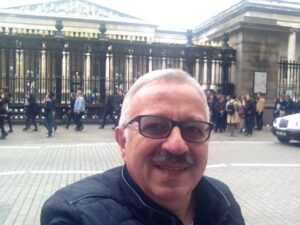
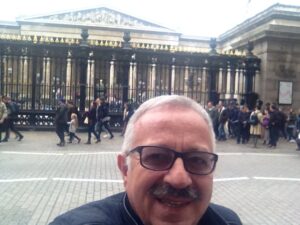
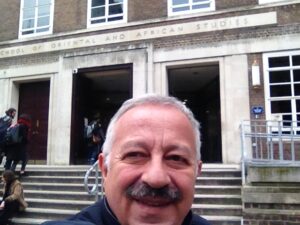
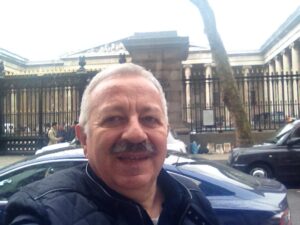
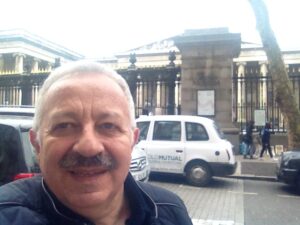
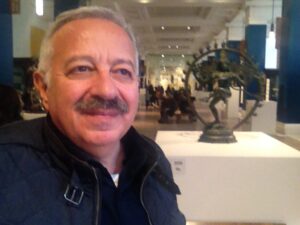
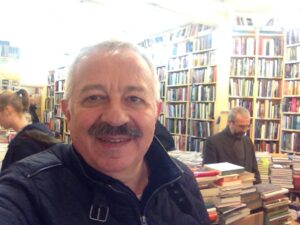
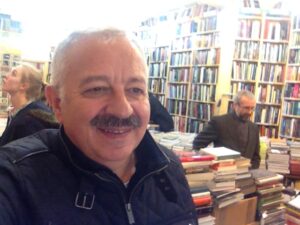
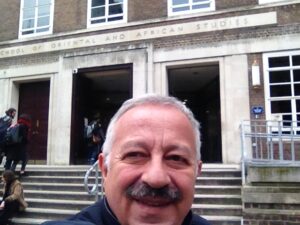
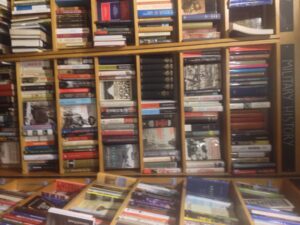
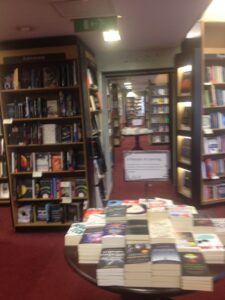
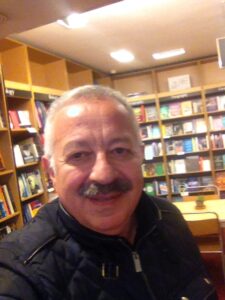
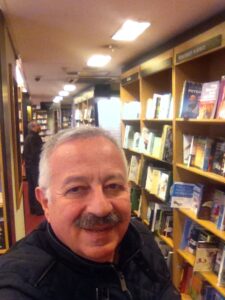
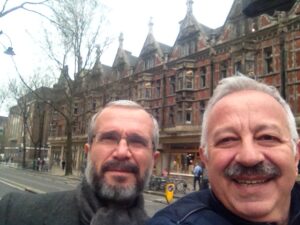
To the City: Life and Death Along the Ancient Walls of Istanbul
$6.05 (as of 04/01/2026 21:28 GMT +03:00 - More infoProduct prices and availability are accurate as of the date/time indicated and are subject to change. Any price and availability information displayed on [relevant Amazon Site(s), as applicable] at the time of purchase will apply to the purchase of this product.)MY TRIP TO... ISTANBUL – Coloring Book with Famous Landmarks and Fun Facts (Ages 6–11)
$9.99 (as of 04/01/2026 21:28 GMT +03:00 - More infoProduct prices and availability are accurate as of the date/time indicated and are subject to change. Any price and availability information displayed on [relevant Amazon Site(s), as applicable] at the time of purchase will apply to the purchase of this product.)ISTANBUL TRAVEL GUIDE 2026: Explore Sultanahmet, Beyoğlu, Kadıköy, Balat & Fener —Discover Hagia Sophia, the Grand Bazaar, Galata Tower, Bosphorus Views, Markets, Food & Nightlife Across Two Continent
$13.99 (as of 04/01/2026 21:28 GMT +03:00 - More infoProduct prices and availability are accurate as of the date/time indicated and are subject to change. Any price and availability information displayed on [relevant Amazon Site(s), as applicable] at the time of purchase will apply to the purchase of this product.)Living in Istanbul
$5.80 (as of 04/01/2026 21:28 GMT +03:00 - More infoProduct prices and availability are accurate as of the date/time indicated and are subject to change. Any price and availability information displayed on [relevant Amazon Site(s), as applicable] at the time of purchase will apply to the purchase of this product.)TURKEY TRAVEL GUIDE 2025-2026
$14.00 (as of 04/01/2026 21:28 GMT +03:00 - More infoProduct prices and availability are accurate as of the date/time indicated and are subject to change. Any price and availability information displayed on [relevant Amazon Site(s), as applicable] at the time of purchase will apply to the purchase of this product.)Istanbul Travel Guide: Captivating Adventures Through Ottoman Splendor, Byzantine Wonders, Turkish Landmarks, Hidden Gems, and More (Traveling the World)
$18.69 (as of 04/01/2026 21:28 GMT +03:00 - More infoProduct prices and availability are accurate as of the date/time indicated and are subject to change. Any price and availability information displayed on [relevant Amazon Site(s), as applicable] at the time of purchase will apply to the purchase of this product.)DK Top 10 Istanbul (Pocket Travel Guide)
$15.99 (as of 04/01/2026 21:28 GMT +03:00 - More infoProduct prices and availability are accurate as of the date/time indicated and are subject to change. Any price and availability information displayed on [relevant Amazon Site(s), as applicable] at the time of purchase will apply to the purchase of this product.)Notes on a Foreign Country: An American Abroad in a Post-American World
$9.95 (as of 04/01/2026 21:28 GMT +03:00 - More infoProduct prices and availability are accurate as of the date/time indicated and are subject to change. Any price and availability information displayed on [relevant Amazon Site(s), as applicable] at the time of purchase will apply to the purchase of this product.)ISTANBUL TRAVEL GUIDE 2026 (Full-Color): From Hagia Sophia to the Spice Bazaar, Bosphorus to Topkapi Palace, Experience the History, Food, Art, Shopping, Nightlife and Adventures of This Timeless City
$14.99 (as of 04/01/2026 21:28 GMT +03:00 - More infoProduct prices and availability are accurate as of the date/time indicated and are subject to change. Any price and availability information displayed on [relevant Amazon Site(s), as applicable] at the time of purchase will apply to the purchase of this product.)The Mini Rough Guide to Istanbul and the Aegean Coast: Travel Guide with eBook
$12.48 (as of 04/01/2026 21:28 GMT +03:00 - More infoProduct prices and availability are accurate as of the date/time indicated and are subject to change. Any price and availability information displayed on [relevant Amazon Site(s), as applicable] at the time of purchase will apply to the purchase of this product.)Collins Turkish Phrasebook and Dictionary Gem Edition (Collins Gem)
$0.99 (as of 04/01/2026 21:34 GMT +03:00 - More infoProduct prices and availability are accurate as of the date/time indicated and are subject to change. Any price and availability information displayed on [relevant Amazon Site(s), as applicable] at the time of purchase will apply to the purchase of this product.)A Guide to Biblical Sites in Greece and Turkey
$18.47 (as of 04/01/2026 21:34 GMT +03:00 - More infoProduct prices and availability are accurate as of the date/time indicated and are subject to change. Any price and availability information displayed on [relevant Amazon Site(s), as applicable] at the time of purchase will apply to the purchase of this product.)Fodor's Essential Turkey (Full-color Travel Guide)
$2.39 (as of 04/01/2026 21:34 GMT +03:00 - More infoProduct prices and availability are accurate as of the date/time indicated and are subject to change. Any price and availability information displayed on [relevant Amazon Site(s), as applicable] at the time of purchase will apply to the purchase of this product.)Strolling Through Istanbul: The Classic Guide to the City
$17.67 (as of 04/01/2026 21:34 GMT +03:00 - More infoProduct prices and availability are accurate as of the date/time indicated and are subject to change. Any price and availability information displayed on [relevant Amazon Site(s), as applicable] at the time of purchase will apply to the purchase of this product.)Türkiye (Turkey) Map (National Geographic Adventure Map, 3018)
$11.87 (as of 04/01/2026 21:34 GMT +03:00 - More infoProduct prices and availability are accurate as of the date/time indicated and are subject to change. Any price and availability information displayed on [relevant Amazon Site(s), as applicable] at the time of purchase will apply to the purchase of this product.)Türkiye (Turkey): Mediterranean Coast Map (National Geographic Adventure Map, 3019)
$7.68 (as of 04/01/2026 21:34 GMT +03:00 - More infoProduct prices and availability are accurate as of the date/time indicated and are subject to change. Any price and availability information displayed on [relevant Amazon Site(s), as applicable] at the time of purchase will apply to the purchase of this product.)DK Top 10 Istanbul (Pocket Travel Guide)
$4.12 (as of 04/01/2026 21:34 GMT +03:00 - More infoProduct prices and availability are accurate as of the date/time indicated and are subject to change. Any price and availability information displayed on [relevant Amazon Site(s), as applicable] at the time of purchase will apply to the purchase of this product.)Turkey Travel Guide: Captivating Adventures through Rich History, Turkish Delights, Turkish Landmarks, Hidden Gems, and More (Traveling the World)
$13.69 (as of 04/01/2026 21:34 GMT +03:00 - More infoProduct prices and availability are accurate as of the date/time indicated and are subject to change. Any price and availability information displayed on [relevant Amazon Site(s), as applicable] at the time of purchase will apply to the purchase of this product.)Notes on a Foreign Country: An American Abroad in a Post-American World
$3.74 (as of 04/01/2026 21:34 GMT +03:00 - More infoProduct prices and availability are accurate as of the date/time indicated and are subject to change. Any price and availability information displayed on [relevant Amazon Site(s), as applicable] at the time of purchase will apply to the purchase of this product.)The Christian Traveler's Guide to the Holy Land
$19.99 (as of 04/01/2026 21:34 GMT +03:00 - More infoProduct prices and availability are accurate as of the date/time indicated and are subject to change. Any price and availability information displayed on [relevant Amazon Site(s), as applicable] at the time of purchase will apply to the purchase of this product.)Aleppo, Syria. 1988
The Turkish Cookbook
$40.48 (as of 04/01/2026 21:28 GMT +03:00 - More infoProduct prices and availability are accurate as of the date/time indicated and are subject to change. Any price and availability information displayed on [relevant Amazon Site(s), as applicable] at the time of purchase will apply to the purchase of this product.)Notes on a Foreign Country: An American Abroad in a Post-American World
$9.95 (as of 04/01/2026 21:28 GMT +03:00 - More infoProduct prices and availability are accurate as of the date/time indicated and are subject to change. Any price and availability information displayed on [relevant Amazon Site(s), as applicable] at the time of purchase will apply to the purchase of this product.)Istanbul Travel Guide 2024-2025: A Journey Through Time and Empires: A Deep Dive into the Cultural, Culinary, and Architectural Heritage of Turkey's Historic City (MUST-VISIT PLACES IN 2025)
$12.99 (as of 04/01/2026 21:28 GMT +03:00 - More infoProduct prices and availability are accurate as of the date/time indicated and are subject to change. Any price and availability information displayed on [relevant Amazon Site(s), as applicable] at the time of purchase will apply to the purchase of this product.)Rick Steves Istanbul: With Ephesus & Cappadocia
$19.22 (as of 04/01/2026 21:28 GMT +03:00 - More infoProduct prices and availability are accurate as of the date/time indicated and are subject to change. Any price and availability information displayed on [relevant Amazon Site(s), as applicable] at the time of purchase will apply to the purchase of this product.)ISTANBUL TRAVEL GUIDE 2026: Explore Sultanahmet, Beyoğlu, Kadıköy, Balat & Fener —Discover Hagia Sophia, the Grand Bazaar, Galata Tower, Bosphorus Views, Markets, Food & Nightlife Across Two Continent
$13.99 (as of 04/01/2026 21:28 GMT +03:00 - More infoProduct prices and availability are accurate as of the date/time indicated and are subject to change. Any price and availability information displayed on [relevant Amazon Site(s), as applicable] at the time of purchase will apply to the purchase of this product.)The Rough Guide to Turkey (Travel Guide with eBook) (Rough Guide Main Series)
$21.52 (as of 04/01/2026 21:28 GMT +03:00 - More infoProduct prices and availability are accurate as of the date/time indicated and are subject to change. Any price and availability information displayed on [relevant Amazon Site(s), as applicable] at the time of purchase will apply to the purchase of this product.)Picture Book of Istanbul: Largest City in Türkieye and Former Known as Constantinople – See the Blue Mosque, Haga Sofia and More in this city Located ... Europe and Asia (Travel Coffee Table Books)
$9.99 (as of 04/01/2026 21:28 GMT +03:00 - More infoProduct prices and availability are accurate as of the date/time indicated and are subject to change. Any price and availability information displayed on [relevant Amazon Site(s), as applicable] at the time of purchase will apply to the purchase of this product.)Rick Steves Istanbul: With Ephesus & Cappadocia
$19.99 (as of 04/01/2026 21:28 GMT +03:00 - More infoProduct prices and availability are accurate as of the date/time indicated and are subject to change. Any price and availability information displayed on [relevant Amazon Site(s), as applicable] at the time of purchase will apply to the purchase of this product.)Living in Istanbul
$5.80 (as of 04/01/2026 21:28 GMT +03:00 - More infoProduct prices and availability are accurate as of the date/time indicated and are subject to change. Any price and availability information displayed on [relevant Amazon Site(s), as applicable] at the time of purchase will apply to the purchase of this product.)Opulent Istanbul: A Journey In Style
$22.99 (as of 04/01/2026 21:28 GMT +03:00 - More infoProduct prices and availability are accurate as of the date/time indicated and are subject to change. Any price and availability information displayed on [relevant Amazon Site(s), as applicable] at the time of purchase will apply to the purchase of this product.)Rick Steves Istanbul: With Ephesus & Cappadocia
$11.49 (as of 04/01/2026 21:34 GMT +03:00 - More infoProduct prices and availability are accurate as of the date/time indicated and are subject to change. Any price and availability information displayed on [relevant Amazon Site(s), as applicable] at the time of purchase will apply to the purchase of this product.)The Rough Guide to Turkey (Travel Guide with eBook) (Rough Guide Main Series)
$14.30 (as of 04/01/2026 21:34 GMT +03:00 - More infoProduct prices and availability are accurate as of the date/time indicated and are subject to change. Any price and availability information displayed on [relevant Amazon Site(s), as applicable] at the time of purchase will apply to the purchase of this product.)The Amazing Mrs. Pollifax (Mrs. Pollifax Series Book 2)
$5.99 (as of 04/01/2026 21:34 GMT +03:00 - More infoProduct prices and availability are accurate as of the date/time indicated and are subject to change. Any price and availability information displayed on [relevant Amazon Site(s), as applicable] at the time of purchase will apply to the purchase of this product.)The Desert and the Sown: Travels in Palestine and Syria
$0.99 (as of 04/01/2026 21:34 GMT +03:00 - More infoProduct prices and availability are accurate as of the date/time indicated and are subject to change. Any price and availability information displayed on [relevant Amazon Site(s), as applicable] at the time of purchase will apply to the purchase of this product.)DK Top 10 Istanbul (Pocket Travel Guide)
$4.12 (as of 04/01/2026 21:34 GMT +03:00 - More infoProduct prices and availability are accurate as of the date/time indicated and are subject to change. Any price and availability information displayed on [relevant Amazon Site(s), as applicable] at the time of purchase will apply to the purchase of this product.)Istanbul: Memories and the City
$1.31 (as of 04/01/2026 21:34 GMT +03:00 - More infoProduct prices and availability are accurate as of the date/time indicated and are subject to change. Any price and availability information displayed on [relevant Amazon Site(s), as applicable] at the time of purchase will apply to the purchase of this product.)The Christian Traveler's Guide to the Holy Land
$19.99 (as of 04/01/2026 21:34 GMT +03:00 - More infoProduct prices and availability are accurate as of the date/time indicated and are subject to change. Any price and availability information displayed on [relevant Amazon Site(s), as applicable] at the time of purchase will apply to the purchase of this product.)Turkey Travel Guide: Captivating Adventures through Rich History, Turkish Delights, Turkish Landmarks, Hidden Gems, and More (Traveling the World)
$13.69 (as of 04/01/2026 21:34 GMT +03:00 - More infoProduct prices and availability are accurate as of the date/time indicated and are subject to change. Any price and availability information displayed on [relevant Amazon Site(s), as applicable] at the time of purchase will apply to the purchase of this product.)DK Eyewitness Travel Guide Turkey (Eyewitness Travel Guides)
$12.11 (as of 04/01/2026 21:34 GMT +03:00 - More infoProduct prices and availability are accurate as of the date/time indicated and are subject to change. Any price and availability information displayed on [relevant Amazon Site(s), as applicable] at the time of purchase will apply to the purchase of this product.)Fodor's Essential Turkey (Full-color Travel Guide)
$2.39 (as of 04/01/2026 21:34 GMT +03:00 - More infoProduct prices and availability are accurate as of the date/time indicated and are subject to change. Any price and availability information displayed on [relevant Amazon Site(s), as applicable] at the time of purchase will apply to the purchase of this product.)Qatar
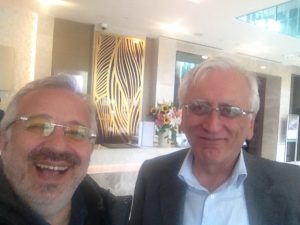
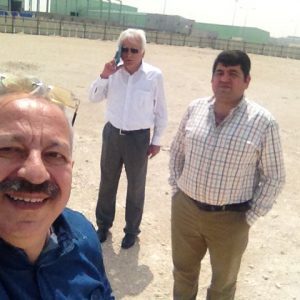
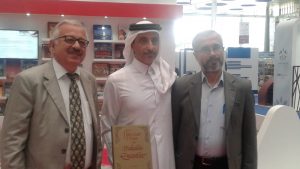
Picture Book of Istanbul: Largest City in Türkieye and Former Known as Constantinople – See the Blue Mosque, Haga Sofia and More in this city Located ... Europe and Asia (Travel Coffee Table Books)
$9.99 (as of 04/01/2026 21:28 GMT +03:00 - More infoProduct prices and availability are accurate as of the date/time indicated and are subject to change. Any price and availability information displayed on [relevant Amazon Site(s), as applicable] at the time of purchase will apply to the purchase of this product.)Rick Steves Istanbul: With Ephesus & Cappadocia
$19.22 (as of 04/01/2026 21:28 GMT +03:00 - More infoProduct prices and availability are accurate as of the date/time indicated and are subject to change. Any price and availability information displayed on [relevant Amazon Site(s), as applicable] at the time of purchase will apply to the purchase of this product.)Istanbul Travel Guide: Captivating Adventures Through Ottoman Splendor, Byzantine Wonders, Turkish Landmarks, Hidden Gems, and More (Traveling the World)
$18.69 (as of 04/01/2026 21:28 GMT +03:00 - More infoProduct prices and availability are accurate as of the date/time indicated and are subject to change. Any price and availability information displayed on [relevant Amazon Site(s), as applicable] at the time of purchase will apply to the purchase of this product.)The Turkish Cookbook
$40.48 (as of 04/01/2026 21:28 GMT +03:00 - More infoProduct prices and availability are accurate as of the date/time indicated and are subject to change. Any price and availability information displayed on [relevant Amazon Site(s), as applicable] at the time of purchase will apply to the purchase of this product.)Istanbul Travel Guide: 50+ Cool Things To See And Do To Have An Amazing Experience In Istanbul, Turkey. (Roy McKean Travel Tour Resources)
$16.99 (as of 04/01/2026 21:28 GMT +03:00 - More infoProduct prices and availability are accurate as of the date/time indicated and are subject to change. Any price and availability information displayed on [relevant Amazon Site(s), as applicable] at the time of purchase will apply to the purchase of this product.)TURKEY TRAVEL GUIDE 2025-2026
$14.00 (as of 04/01/2026 21:28 GMT +03:00 - More infoProduct prices and availability are accurate as of the date/time indicated and are subject to change. Any price and availability information displayed on [relevant Amazon Site(s), as applicable] at the time of purchase will apply to the purchase of this product.)Rick Stein: From Venice to Istanbul: Discovering the Flavours of the Eastern Mediterranean
$14.99 (as of 04/01/2026 21:28 GMT +03:00 - More infoProduct prices and availability are accurate as of the date/time indicated and are subject to change. Any price and availability information displayed on [relevant Amazon Site(s), as applicable] at the time of purchase will apply to the purchase of this product.)Istanbul: City of Majesty at the Crossroads of the World
$45.72 (as of 04/01/2026 21:28 GMT +03:00 - More infoProduct prices and availability are accurate as of the date/time indicated and are subject to change. Any price and availability information displayed on [relevant Amazon Site(s), as applicable] at the time of purchase will apply to the purchase of this product.)Lonely Planet Istanbul (Travel Guide)
$5.98 (as of 04/01/2026 21:28 GMT +03:00 - More infoProduct prices and availability are accurate as of the date/time indicated and are subject to change. Any price and availability information displayed on [relevant Amazon Site(s), as applicable] at the time of purchase will apply to the purchase of this product.)MY TRIP TO... ISTANBUL – Coloring Book with Famous Landmarks and Fun Facts (Ages 6–11)
$9.99 (as of 04/01/2026 21:28 GMT +03:00 - More infoProduct prices and availability are accurate as of the date/time indicated and are subject to change. Any price and availability information displayed on [relevant Amazon Site(s), as applicable] at the time of purchase will apply to the purchase of this product.)DK Eyewitness Travel Guide Istanbul (Eyewitness Travel Guides)
$10.47 (as of 04/01/2026 21:34 GMT +03:00 - More infoProduct prices and availability are accurate as of the date/time indicated and are subject to change. Any price and availability information displayed on [relevant Amazon Site(s), as applicable] at the time of purchase will apply to the purchase of this product.)The Rough Guide to Turkey (Travel Guide with eBook) (Rough Guide Main Series)
$14.30 (as of 04/01/2026 21:34 GMT +03:00 - More infoProduct prices and availability are accurate as of the date/time indicated and are subject to change. Any price and availability information displayed on [relevant Amazon Site(s), as applicable] at the time of purchase will apply to the purchase of this product.)A Traveller's History of Turkey
$6.96 (as of 04/01/2026 21:34 GMT +03:00 - More infoProduct prices and availability are accurate as of the date/time indicated and are subject to change. Any price and availability information displayed on [relevant Amazon Site(s), as applicable] at the time of purchase will apply to the purchase of this product.)Fodor's Essential Turkey (Full-color Travel Guide)
$2.39 (as of 04/01/2026 21:34 GMT +03:00 - More infoProduct prices and availability are accurate as of the date/time indicated and are subject to change. Any price and availability information displayed on [relevant Amazon Site(s), as applicable] at the time of purchase will apply to the purchase of this product.)The Turkish Cookbook
$42.79 (as of 04/01/2026 21:34 GMT +03:00 - More infoProduct prices and availability are accurate as of the date/time indicated and are subject to change. Any price and availability information displayed on [relevant Amazon Site(s), as applicable] at the time of purchase will apply to the purchase of this product.)Türkiye (Turkey) Map (National Geographic Adventure Map, 3018)
$11.87 (as of 04/01/2026 21:34 GMT +03:00 - More infoProduct prices and availability are accurate as of the date/time indicated and are subject to change. Any price and availability information displayed on [relevant Amazon Site(s), as applicable] at the time of purchase will apply to the purchase of this product.)Istanbul, City map 1:10.000, City Pocket map + The Big Five
$11.95 (as of 04/01/2026 21:34 GMT +03:00 - More infoProduct prices and availability are accurate as of the date/time indicated and are subject to change. Any price and availability information displayed on [relevant Amazon Site(s), as applicable] at the time of purchase will apply to the purchase of this product.)Turkey Travel and Exploration Guide - 2025: The Ultimate Traveler's Guide to Turkey from the Experiences of a Local Guide
$11.90 (as of 04/01/2026 21:34 GMT +03:00 - More infoProduct prices and availability are accurate as of the date/time indicated and are subject to change. Any price and availability information displayed on [relevant Amazon Site(s), as applicable] at the time of purchase will apply to the purchase of this product.)The Desert and the Sown: Travels in Palestine and Syria
$0.99 (as of 04/01/2026 21:34 GMT +03:00 - More infoProduct prices and availability are accurate as of the date/time indicated and are subject to change. Any price and availability information displayed on [relevant Amazon Site(s), as applicable] at the time of purchase will apply to the purchase of this product.)Learn Turkish language self-study (level one for beginners) : Learn to read, write, speak and understand Turkish by yourself, even if you are a beginner ... (Mastering Turkish: Step by Step) Book 1)
$4.99 (as of 04/01/2026 21:34 GMT +03:00 - More infoProduct prices and availability are accurate as of the date/time indicated and are subject to change. Any price and availability information displayed on [relevant Amazon Site(s), as applicable] at the time of purchase will apply to the purchase of this product.)Frankfurt, Germany. 1988. 2018


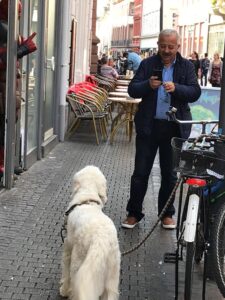
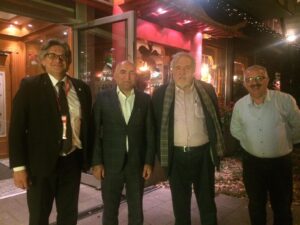
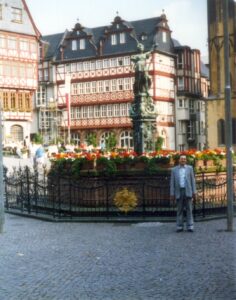
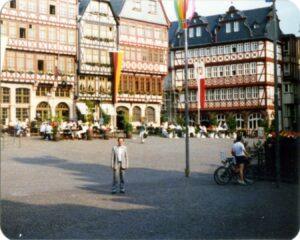
Rick Steves Istanbul: With Ephesus & Cappadocia
$19.22 (as of 04/01/2026 21:28 GMT +03:00 - More infoProduct prices and availability are accurate as of the date/time indicated and are subject to change. Any price and availability information displayed on [relevant Amazon Site(s), as applicable] at the time of purchase will apply to the purchase of this product.)Rick Stein: From Venice to Istanbul: Discovering the Flavours of the Eastern Mediterranean
$14.99 (as of 04/01/2026 21:28 GMT +03:00 - More infoProduct prices and availability are accurate as of the date/time indicated and are subject to change. Any price and availability information displayed on [relevant Amazon Site(s), as applicable] at the time of purchase will apply to the purchase of this product.)Istanbul Travel Guide 2024-2025: A Journey Through Time and Empires: A Deep Dive into the Cultural, Culinary, and Architectural Heritage of Turkey's Historic City (MUST-VISIT PLACES IN 2025)
$12.99 (as of 04/01/2026 21:28 GMT +03:00 - More infoProduct prices and availability are accurate as of the date/time indicated and are subject to change. Any price and availability information displayed on [relevant Amazon Site(s), as applicable] at the time of purchase will apply to the purchase of this product.)Rick Steves Istanbul: With Ephesus & Cappadocia
$19.99 (as of 04/01/2026 21:28 GMT +03:00 - More infoProduct prices and availability are accurate as of the date/time indicated and are subject to change. Any price and availability information displayed on [relevant Amazon Site(s), as applicable] at the time of purchase will apply to the purchase of this product.)DK Eyewitness Travel Guide Istanbul (Eyewitness Travel Guides)
$24.82 (as of 04/01/2026 21:28 GMT +03:00 - More infoProduct prices and availability are accurate as of the date/time indicated and are subject to change. Any price and availability information displayed on [relevant Amazon Site(s), as applicable] at the time of purchase will apply to the purchase of this product.)Picture Book of Istanbul: Largest City in Türkieye and Former Known as Constantinople – See the Blue Mosque, Haga Sofia and More in this city Located ... Europe and Asia (Travel Coffee Table Books)
$9.99 (as of 04/01/2026 21:28 GMT +03:00 - More infoProduct prices and availability are accurate as of the date/time indicated and are subject to change. Any price and availability information displayed on [relevant Amazon Site(s), as applicable] at the time of purchase will apply to the purchase of this product.)Istanbul For First Timers: A Local's Travel Guide To Turkiye's Hidden Gems and Culture
$15.99 (as of 04/01/2026 21:28 GMT +03:00 - More infoProduct prices and availability are accurate as of the date/time indicated and are subject to change. Any price and availability information displayed on [relevant Amazon Site(s), as applicable] at the time of purchase will apply to the purchase of this product.)Istanbul & Northwest Turkey Travel Reference Map WP
$10.95 (as of 04/01/2026 21:28 GMT +03:00 - More infoProduct prices and availability are accurate as of the date/time indicated and are subject to change. Any price and availability information displayed on [relevant Amazon Site(s), as applicable] at the time of purchase will apply to the purchase of this product.)DK Top 10 Istanbul (Pocket Travel Guide)
$15.99 (as of 04/01/2026 21:28 GMT +03:00 - More infoProduct prices and availability are accurate as of the date/time indicated and are subject to change. Any price and availability information displayed on [relevant Amazon Site(s), as applicable] at the time of purchase will apply to the purchase of this product.)TURKEY TRAVEL GUIDE 2025-2026
$14.00 (as of 04/01/2026 21:28 GMT +03:00 - More infoProduct prices and availability are accurate as of the date/time indicated and are subject to change. Any price and availability information displayed on [relevant Amazon Site(s), as applicable] at the time of purchase will apply to the purchase of this product.)DK Eyewitness Travel Guide Istanbul (Eyewitness Travel Guides)
$10.47 (as of 04/01/2026 21:34 GMT +03:00 - More infoProduct prices and availability are accurate as of the date/time indicated and are subject to change. Any price and availability information displayed on [relevant Amazon Site(s), as applicable] at the time of purchase will apply to the purchase of this product.)Istanbul: City of Majesty at the Crossroads of the World
$4.99 (as of 04/01/2026 21:34 GMT +03:00 - More infoProduct prices and availability are accurate as of the date/time indicated and are subject to change. Any price and availability information displayed on [relevant Amazon Site(s), as applicable] at the time of purchase will apply to the purchase of this product.)Fodor's Essential Turkey (Full-color Travel Guide)
$2.39 (as of 04/01/2026 21:34 GMT +03:00 - More infoProduct prices and availability are accurate as of the date/time indicated and are subject to change. Any price and availability information displayed on [relevant Amazon Site(s), as applicable] at the time of purchase will apply to the purchase of this product.)Istanbul, City map 1:10.000, City Pocket map + The Big Five
$11.95 (as of 04/01/2026 21:34 GMT +03:00 - More infoProduct prices and availability are accurate as of the date/time indicated and are subject to change. Any price and availability information displayed on [relevant Amazon Site(s), as applicable] at the time of purchase will apply to the purchase of this product.)Lonely Planet Pocket Istanbul (Pocket Guide)
$12.13 (as of 04/01/2026 21:34 GMT +03:00 - More infoProduct prices and availability are accurate as of the date/time indicated and are subject to change. Any price and availability information displayed on [relevant Amazon Site(s), as applicable] at the time of purchase will apply to the purchase of this product.)Notes on a Foreign Country: An American Abroad in a Post-American World
$3.74 (as of 04/01/2026 21:34 GMT +03:00 - More infoProduct prices and availability are accurate as of the date/time indicated and are subject to change. Any price and availability information displayed on [relevant Amazon Site(s), as applicable] at the time of purchase will apply to the purchase of this product.)The Rough Guide to Turkey (Travel Guide with eBook) (Rough Guide Main Series)
$14.30 (as of 04/01/2026 21:34 GMT +03:00 - More infoProduct prices and availability are accurate as of the date/time indicated and are subject to change. Any price and availability information displayed on [relevant Amazon Site(s), as applicable] at the time of purchase will apply to the purchase of this product.)The Christian Traveler's Guide to the Holy Land
$19.99 (as of 04/01/2026 21:34 GMT +03:00 - More infoProduct prices and availability are accurate as of the date/time indicated and are subject to change. Any price and availability information displayed on [relevant Amazon Site(s), as applicable] at the time of purchase will apply to the purchase of this product.)Lonely Planet Turkiye (Travel Guide)
$19.60 (as of 04/01/2026 21:34 GMT +03:00 - More infoProduct prices and availability are accurate as of the date/time indicated and are subject to change. Any price and availability information displayed on [relevant Amazon Site(s), as applicable] at the time of purchase will apply to the purchase of this product.)Ultimate Turkey Travel Guide: How Anyone Can Plan a Hassle Free Trip, Gather Deep and Historical and Cultural Insights, While Experiencing Lesser Known Destinations For an Authentic Experience
$16.99 (as of 04/01/2026 21:34 GMT +03:00 - More infoProduct prices and availability are accurate as of the date/time indicated and are subject to change. Any price and availability information displayed on [relevant Amazon Site(s), as applicable] at the time of purchase will apply to the purchase of this product.)Damascus, Syria. 1987
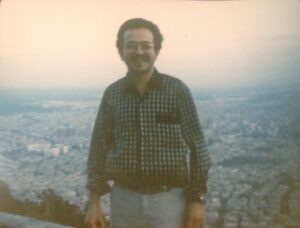

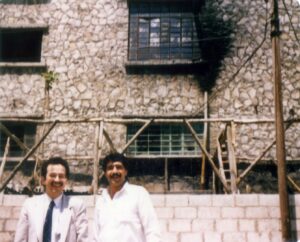
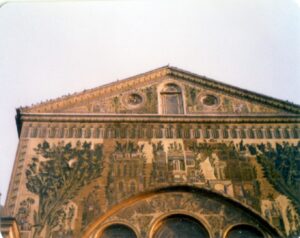
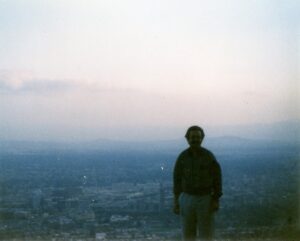
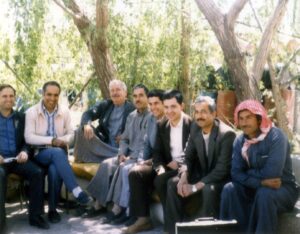
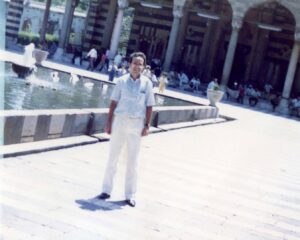
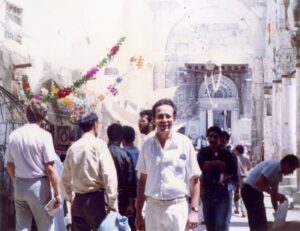
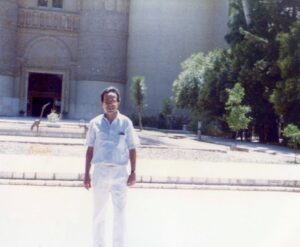
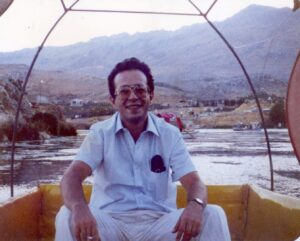
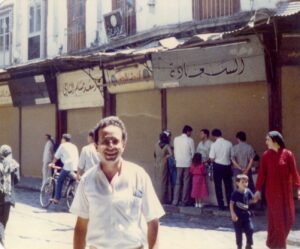
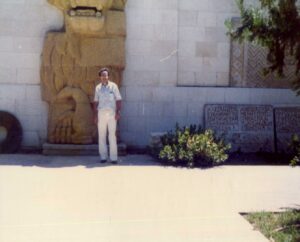 D
D
The Mini Rough Guide to Istanbul and the Aegean Coast: Travel Guide with eBook
$12.48 (as of 04/01/2026 21:28 GMT +03:00 - More infoProduct prices and availability are accurate as of the date/time indicated and are subject to change. Any price and availability information displayed on [relevant Amazon Site(s), as applicable] at the time of purchase will apply to the purchase of this product.)Crescent and Star: Turkey Between Two Worlds
$12.00 (as of 04/01/2026 21:28 GMT +03:00 - More infoProduct prices and availability are accurate as of the date/time indicated and are subject to change. Any price and availability information displayed on [relevant Amazon Site(s), as applicable] at the time of purchase will apply to the purchase of this product.)Istanbul Travel Guide 2026: Top Places to Visit, Things to Do, Exploring Neighborhood, Itineraries, Festivals and Events, Food and Drink, Shopping, Day ... And Culture. (EXPLORE THE GLOBE Book 9)
$4.99 (as of 04/01/2026 21:28 GMT +03:00 - More infoProduct prices and availability are accurate as of the date/time indicated and are subject to change. Any price and availability information displayed on [relevant Amazon Site(s), as applicable] at the time of purchase will apply to the purchase of this product.)Rick Steves Istanbul: With Ephesus & Cappadocia
$19.22 (as of 04/01/2026 21:28 GMT +03:00 - More infoProduct prices and availability are accurate as of the date/time indicated and are subject to change. Any price and availability information displayed on [relevant Amazon Site(s), as applicable] at the time of purchase will apply to the purchase of this product.)DK Top 10 Istanbul (Pocket Travel Guide)
$15.99 (as of 04/01/2026 21:28 GMT +03:00 - More infoProduct prices and availability are accurate as of the date/time indicated and are subject to change. Any price and availability information displayed on [relevant Amazon Site(s), as applicable] at the time of purchase will apply to the purchase of this product.)Rick Stein: From Venice to Istanbul: Discovering the Flavours of the Eastern Mediterranean
$14.99 (as of 04/01/2026 21:28 GMT +03:00 - More infoProduct prices and availability are accurate as of the date/time indicated and are subject to change. Any price and availability information displayed on [relevant Amazon Site(s), as applicable] at the time of purchase will apply to the purchase of this product.)MY TRIP TO... ISTANBUL – Coloring Book with Famous Landmarks and Fun Facts (Ages 6–11)
$9.99 (as of 04/01/2026 21:28 GMT +03:00 - More infoProduct prices and availability are accurate as of the date/time indicated and are subject to change. Any price and availability information displayed on [relevant Amazon Site(s), as applicable] at the time of purchase will apply to the purchase of this product.)Lonely Planet Pocket Istanbul (Pocket Guide)
$13.97 (as of 04/01/2026 21:28 GMT +03:00 - More infoProduct prices and availability are accurate as of the date/time indicated and are subject to change. Any price and availability information displayed on [relevant Amazon Site(s), as applicable] at the time of purchase will apply to the purchase of this product.)Picture Book of Istanbul: Largest City in Türkieye and Former Known as Constantinople – See the Blue Mosque, Haga Sofia and More in this city Located ... Europe and Asia (Travel Coffee Table Books)
$9.99 (as of 04/01/2026 21:28 GMT +03:00 - More infoProduct prices and availability are accurate as of the date/time indicated and are subject to change. Any price and availability information displayed on [relevant Amazon Site(s), as applicable] at the time of purchase will apply to the purchase of this product.)ISTANBUL TRAVEL GUIDE 2026: Explore Sultanahmet, Beyoğlu, Kadıköy, Balat & Fener —Discover Hagia Sophia, the Grand Bazaar, Galata Tower, Bosphorus Views, Markets, Food & Nightlife Across Two Continent
$13.99 (as of 04/01/2026 21:28 GMT +03:00 - More infoProduct prices and availability are accurate as of the date/time indicated and are subject to change. Any price and availability information displayed on [relevant Amazon Site(s), as applicable] at the time of purchase will apply to the purchase of this product.)Türkiye (Turkey) Map (National Geographic Adventure Map, 3018)
$11.87 (as of 04/01/2026 21:34 GMT +03:00 - More infoProduct prices and availability are accurate as of the date/time indicated and are subject to change. Any price and availability information displayed on [relevant Amazon Site(s), as applicable] at the time of purchase will apply to the purchase of this product.)DK Eyewitness Travel Guide Istanbul (Eyewitness Travel Guides)
$10.47 (as of 04/01/2026 21:34 GMT +03:00 - More infoProduct prices and availability are accurate as of the date/time indicated and are subject to change. Any price and availability information displayed on [relevant Amazon Site(s), as applicable] at the time of purchase will apply to the purchase of this product.)Turkey - Culture Smart!: The Essential Guide to Customs & Culture
$16.51 (as of 04/01/2026 21:34 GMT +03:00 - More infoProduct prices and availability are accurate as of the date/time indicated and are subject to change. Any price and availability information displayed on [relevant Amazon Site(s), as applicable] at the time of purchase will apply to the purchase of this product.)Turkey Travel and Exploration Guide - 2025: The Ultimate Traveler's Guide to Turkey from the Experiences of a Local Guide
$11.90 (as of 04/01/2026 21:34 GMT +03:00 - More infoProduct prices and availability are accurate as of the date/time indicated and are subject to change. Any price and availability information displayed on [relevant Amazon Site(s), as applicable] at the time of purchase will apply to the purchase of this product.)Türkiye (Turkey): Mediterranean Coast Map (National Geographic Adventure Map, 3019)
$7.68 (as of 04/01/2026 21:34 GMT +03:00 - More infoProduct prices and availability are accurate as of the date/time indicated and are subject to change. Any price and availability information displayed on [relevant Amazon Site(s), as applicable] at the time of purchase will apply to the purchase of this product.)Rick Steves Istanbul: With Ephesus & Cappadocia
$11.49 (as of 04/01/2026 21:34 GMT +03:00 - More infoProduct prices and availability are accurate as of the date/time indicated and are subject to change. Any price and availability information displayed on [relevant Amazon Site(s), as applicable] at the time of purchase will apply to the purchase of this product.)Turkey Travel Guide: Captivating Adventures through Rich History, Turkish Delights, Turkish Landmarks, Hidden Gems, and More (Traveling the World)
$13.69 (as of 04/01/2026 21:34 GMT +03:00 - More infoProduct prices and availability are accurate as of the date/time indicated and are subject to change. Any price and availability information displayed on [relevant Amazon Site(s), as applicable] at the time of purchase will apply to the purchase of this product.)A Guide to Biblical Sites in Greece and Turkey
$18.47 (as of 04/01/2026 21:34 GMT +03:00 - More infoProduct prices and availability are accurate as of the date/time indicated and are subject to change. Any price and availability information displayed on [relevant Amazon Site(s), as applicable] at the time of purchase will apply to the purchase of this product.)Learn Turkish language self-study (level one for beginners) : Learn to read, write, speak and understand Turkish by yourself, even if you are a beginner ... (Mastering Turkish: Step by Step) Book 1)
$4.99 (as of 04/01/2026 21:34 GMT +03:00 - More infoProduct prices and availability are accurate as of the date/time indicated and are subject to change. Any price and availability information displayed on [relevant Amazon Site(s), as applicable] at the time of purchase will apply to the purchase of this product.)Istanbul, City map 1:10.000, City Pocket map + The Big Five
$11.95 (as of 04/01/2026 21:34 GMT +03:00 - More infoProduct prices and availability are accurate as of the date/time indicated and are subject to change. Any price and availability information displayed on [relevant Amazon Site(s), as applicable] at the time of purchase will apply to the purchase of this product.)Beirut, Lebanon 2003
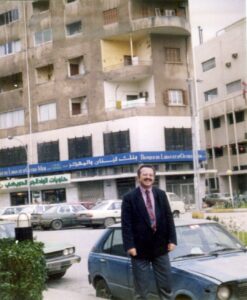
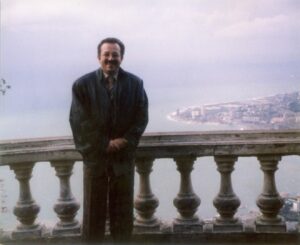
Istanbul Travel Guide 2024-2025: A Journey Through Time and Empires: A Deep Dive into the Cultural, Culinary, and Architectural Heritage of Turkey's Historic City (MUST-VISIT PLACES IN 2025)
$12.99 (as of 04/01/2026 21:28 GMT +03:00 - More infoProduct prices and availability are accurate as of the date/time indicated and are subject to change. Any price and availability information displayed on [relevant Amazon Site(s), as applicable] at the time of purchase will apply to the purchase of this product.)Crescent and Star: Turkey Between Two Worlds
$12.00 (as of 04/01/2026 21:28 GMT +03:00 - More infoProduct prices and availability are accurate as of the date/time indicated and are subject to change. Any price and availability information displayed on [relevant Amazon Site(s), as applicable] at the time of purchase will apply to the purchase of this product.)Istanbul: City of Majesty at the Crossroads of the World
$45.72 (as of 04/01/2026 21:28 GMT +03:00 - More infoProduct prices and availability are accurate as of the date/time indicated and are subject to change. Any price and availability information displayed on [relevant Amazon Site(s), as applicable] at the time of purchase will apply to the purchase of this product.)The Mini Rough Guide to Istanbul and the Aegean Coast: Travel Guide with eBook
$12.48 (as of 04/01/2026 21:28 GMT +03:00 - More infoProduct prices and availability are accurate as of the date/time indicated and are subject to change. Any price and availability information displayed on [relevant Amazon Site(s), as applicable] at the time of purchase will apply to the purchase of this product.)Istanbul, City map 1:10.000, City Pocket map + The Big Five
$11.95 (as of 04/01/2026 21:28 GMT +03:00 - More infoProduct prices and availability are accurate as of the date/time indicated and are subject to change. Any price and availability information displayed on [relevant Amazon Site(s), as applicable] at the time of purchase will apply to the purchase of this product.)Living in Istanbul
$5.80 (as of 04/01/2026 21:28 GMT +03:00 - More infoProduct prices and availability are accurate as of the date/time indicated and are subject to change. Any price and availability information displayed on [relevant Amazon Site(s), as applicable] at the time of purchase will apply to the purchase of this product.)The Turkish Cookbook
$40.48 (as of 04/01/2026 21:28 GMT +03:00 - More infoProduct prices and availability are accurate as of the date/time indicated and are subject to change. Any price and availability information displayed on [relevant Amazon Site(s), as applicable] at the time of purchase will apply to the purchase of this product.)Picture Book of Istanbul: Largest City in Türkieye and Former Known as Constantinople – See the Blue Mosque, Haga Sofia and More in this city Located ... Europe and Asia (Travel Coffee Table Books)
$9.99 (as of 04/01/2026 21:28 GMT +03:00 - More infoProduct prices and availability are accurate as of the date/time indicated and are subject to change. Any price and availability information displayed on [relevant Amazon Site(s), as applicable] at the time of purchase will apply to the purchase of this product.)DK Eyewitness Travel Guide Istanbul (Eyewitness Travel Guides)
$24.82 (as of 04/01/2026 21:28 GMT +03:00 - More infoProduct prices and availability are accurate as of the date/time indicated and are subject to change. Any price and availability information displayed on [relevant Amazon Site(s), as applicable] at the time of purchase will apply to the purchase of this product.)The Rough Guide to Turkey (Travel Guide with eBook) (Rough Guide Main Series)
$21.52 (as of 04/01/2026 21:28 GMT +03:00 - More infoProduct prices and availability are accurate as of the date/time indicated and are subject to change. Any price and availability information displayed on [relevant Amazon Site(s), as applicable] at the time of purchase will apply to the purchase of this product.)Lonely Planet Pocket Istanbul (Pocket Guide)
$12.13 (as of 04/01/2026 21:34 GMT +03:00 - More infoProduct prices and availability are accurate as of the date/time indicated and are subject to change. Any price and availability information displayed on [relevant Amazon Site(s), as applicable] at the time of purchase will apply to the purchase of this product.)Rick Steves Istanbul: With Ephesus & Cappadocia
$11.49 (as of 04/01/2026 21:34 GMT +03:00 - More infoProduct prices and availability are accurate as of the date/time indicated and are subject to change. Any price and availability information displayed on [relevant Amazon Site(s), as applicable] at the time of purchase will apply to the purchase of this product.)Lonely Planet Turkiye (Travel Guide)
$19.60 (as of 04/01/2026 21:34 GMT +03:00 - More infoProduct prices and availability are accurate as of the date/time indicated and are subject to change. Any price and availability information displayed on [relevant Amazon Site(s), as applicable] at the time of purchase will apply to the purchase of this product.)Collins Turkish Phrasebook and Dictionary Gem Edition (Collins Gem)
$0.99 (as of 04/01/2026 21:34 GMT +03:00 - More infoProduct prices and availability are accurate as of the date/time indicated and are subject to change. Any price and availability information displayed on [relevant Amazon Site(s), as applicable] at the time of purchase will apply to the purchase of this product.)Notes on a Foreign Country: An American Abroad in a Post-American World
$3.74 (as of 04/01/2026 21:34 GMT +03:00 - More infoProduct prices and availability are accurate as of the date/time indicated and are subject to change. Any price and availability information displayed on [relevant Amazon Site(s), as applicable] at the time of purchase will apply to the purchase of this product.)Turkey Travel and Exploration Guide - 2025: The Ultimate Traveler's Guide to Turkey from the Experiences of a Local Guide
$11.90 (as of 04/01/2026 21:34 GMT +03:00 - More infoProduct prices and availability are accurate as of the date/time indicated and are subject to change. Any price and availability information displayed on [relevant Amazon Site(s), as applicable] at the time of purchase will apply to the purchase of this product.)Türkiye (Turkey): Mediterranean Coast Map (National Geographic Adventure Map, 3019)
$7.68 (as of 04/01/2026 21:34 GMT +03:00 - More infoProduct prices and availability are accurate as of the date/time indicated and are subject to change. Any price and availability information displayed on [relevant Amazon Site(s), as applicable] at the time of purchase will apply to the purchase of this product.)Istanbul: Memories and the City
$1.31 (as of 04/01/2026 21:34 GMT +03:00 - More infoProduct prices and availability are accurate as of the date/time indicated and are subject to change. Any price and availability information displayed on [relevant Amazon Site(s), as applicable] at the time of purchase will apply to the purchase of this product.)The Amazing Mrs. Pollifax (Mrs. Pollifax Series Book 2)
$5.99 (as of 04/01/2026 21:34 GMT +03:00 - More infoProduct prices and availability are accurate as of the date/time indicated and are subject to change. Any price and availability information displayed on [relevant Amazon Site(s), as applicable] at the time of purchase will apply to the purchase of this product.)Strolling Through Istanbul: The Classic Guide to the City
$17.67 (as of 04/01/2026 21:34 GMT +03:00 - More infoProduct prices and availability are accurate as of the date/time indicated and are subject to change. Any price and availability information displayed on [relevant Amazon Site(s), as applicable] at the time of purchase will apply to the purchase of this product.)Paris, France. 1987
